Items
Search full-text
Art Therapy
Class
CreativeWork
-
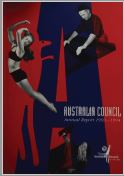 "Australia Council - Annual Report 1993-94" Australia Council Annual Report 1993-94 - discusses objectives, organisation chart, year in review, support for people with disabilities in Art and Working Life, artform development, main activities of Council and its Boards, and includes financial statements and lists of grants made including grants for programs, development of performance, visual art/crafts, media and multi arts, writers in community residence and local documentation projects as well as “Arts and Disability” research and collaboration in performance of “Love Dances (and other stories)”
"Australia Council - Annual Report 1993-94" Australia Council Annual Report 1993-94 - discusses objectives, organisation chart, year in review, support for people with disabilities in Art and Working Life, artform development, main activities of Council and its Boards, and includes financial statements and lists of grants made including grants for programs, development of performance, visual art/crafts, media and multi arts, writers in community residence and local documentation projects as well as “Arts and Disability” research and collaboration in performance of “Love Dances (and other stories)” -
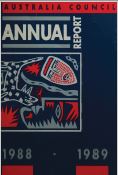 "Australia Council - Annual Report 1988-89" Australia Council Annual Report 1988-89 - discusses objectives, Council Committees and members, board members, allocation chart, main activities of Council and its Boards, and includes financial statements and lists of grants made including grants for community cultural development traineeships, training, programs, projects, performances and promotion and publications including “The Arts and People with Disabilities: A code of practice for arts organisations.”
"Australia Council - Annual Report 1988-89" Australia Council Annual Report 1988-89 - discusses objectives, Council Committees and members, board members, allocation chart, main activities of Council and its Boards, and includes financial statements and lists of grants made including grants for community cultural development traineeships, training, programs, projects, performances and promotion and publications including “The Arts and People with Disabilities: A code of practice for arts organisations.” -
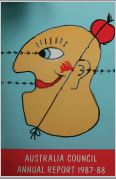 "Australia Council - Annual Report 1987-88" Australia Council Annual Report 1987-88- discusses functions and objectives, structures, process and membership of Council, Council Committees and members, board members, assessment panels, staff lists, organisation chart, main activities of Council and its eight Boards, and how council endorsed a code of practice for arts organisations working with people with disabilities, equal employment opportunities and includes financial statements and lists of grants made including grants for programs, projects, performances and promotion and reading for Royal Blind Society and Brail and Talking Book Library
"Australia Council - Annual Report 1987-88" Australia Council Annual Report 1987-88- discusses functions and objectives, structures, process and membership of Council, Council Committees and members, board members, assessment panels, staff lists, organisation chart, main activities of Council and its eight Boards, and how council endorsed a code of practice for arts organisations working with people with disabilities, equal employment opportunities and includes financial statements and lists of grants made including grants for programs, projects, performances and promotion and reading for Royal Blind Society and Brail and Talking Book Library -
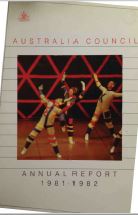 "Australia Council - Annual Report 1981-82" Australia Council Annual Report 1981-82 - discusses objectives, members of council, board members, organisation chart, staff list, council report, programs, board reports, financial statements, publications and grant lists incuding Arts Access Society (Vic) theatre performance of “Theorem” as well as funding for workshops in Artreach, Southern Media Co-operative, disabled playwright in residence, travel costs and artists fees as well as salaries of deaf artists and mime directors and research publication.
"Australia Council - Annual Report 1981-82" Australia Council Annual Report 1981-82 - discusses objectives, members of council, board members, organisation chart, staff list, council report, programs, board reports, financial statements, publications and grant lists incuding Arts Access Society (Vic) theatre performance of “Theorem” as well as funding for workshops in Artreach, Southern Media Co-operative, disabled playwright in residence, travel costs and artists fees as well as salaries of deaf artists and mime directors and research publication. -
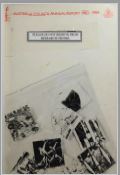 "Australia Council - Annual Report 1983-84" Australia Council Annual Report 1983-84 - discusses main activities of Council and its eight Boards, and includes financial statements and lists of grants made including artist fees, performances for handicapped, production of radio material for blind, and activities for Theatre of the Deaf.
"Australia Council - Annual Report 1983-84" Australia Council Annual Report 1983-84 - discusses main activities of Council and its eight Boards, and includes financial statements and lists of grants made including artist fees, performances for handicapped, production of radio material for blind, and activities for Theatre of the Deaf. -
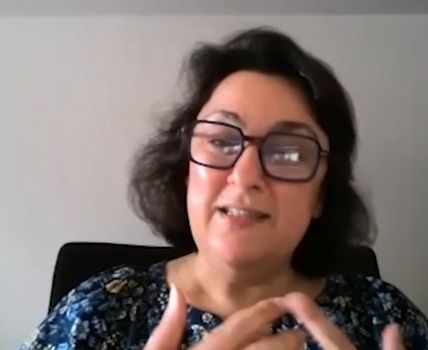 "Interview with Veronica Pardo" Veronica Pardo is a disability arts ally and has been a disability advocate with previous leadership positions in organisations such as Arts Access Victoria and Multicultural Arts Victoria, Interview Summary Veronica Pardo, former Executive Director of Arts Access Victoria, discussed the evolution and impact of Disability Arts in Australia, detailing the political dimensions of the field and the importance of genuine representation and intersectionality. Pardo highlighted the importance of leadership transitions in arts organizations informed by a spirit of solidarity and mutual support, particularly citing Caroline Bowditch's role as significant in the sector. She emphasized a need for systems-level change within the arts to reflect true diversity, beyond tokenism, advocating for dismantling exclusive structures and creating new ones informed by those marginalized. Finally, Pardo stressed the importance of acknowledging the work of predecessors in Disability Arts to honour their legacy and inform current artistic and cultural practices.
"Interview with Veronica Pardo" Veronica Pardo is a disability arts ally and has been a disability advocate with previous leadership positions in organisations such as Arts Access Victoria and Multicultural Arts Victoria, Interview Summary Veronica Pardo, former Executive Director of Arts Access Victoria, discussed the evolution and impact of Disability Arts in Australia, detailing the political dimensions of the field and the importance of genuine representation and intersectionality. Pardo highlighted the importance of leadership transitions in arts organizations informed by a spirit of solidarity and mutual support, particularly citing Caroline Bowditch's role as significant in the sector. She emphasized a need for systems-level change within the arts to reflect true diversity, beyond tokenism, advocating for dismantling exclusive structures and creating new ones informed by those marginalized. Finally, Pardo stressed the importance of acknowledging the work of predecessors in Disability Arts to honour their legacy and inform current artistic and cultural practices. -
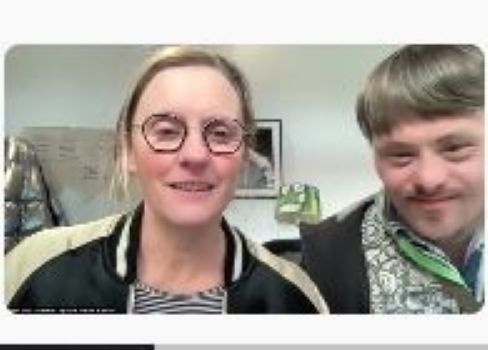 "Interview with Luke Cambpell and Kelly Drummond Cawthon" Luke Campbell is a theatre performer, writer and director and has been with Second Echo since 2015. Interview Summary In the interview Luke Campbell and Kelly Drummond Cawthon from Second Echo Ensemble share insights into their creative processes and the significance of their work. Luke, a core artist for the ensemble, emphasizes the role of deep listening and communication in his art, comparing his work to a meditative exploration of sound and connection, akin to the themes in the movie "Avatar." Kelly, as the ensemble's creative director, highlights the importance of presenting their work across diverse platforms to reach broader audiences and foster inclusive discussions. Throughout the conversation, they express views on the challenges and perceptions surrounding disability arts, advocating for recognition of diverse voices and stories in the arts community.
"Interview with Luke Cambpell and Kelly Drummond Cawthon" Luke Campbell is a theatre performer, writer and director and has been with Second Echo since 2015. Interview Summary In the interview Luke Campbell and Kelly Drummond Cawthon from Second Echo Ensemble share insights into their creative processes and the significance of their work. Luke, a core artist for the ensemble, emphasizes the role of deep listening and communication in his art, comparing his work to a meditative exploration of sound and connection, akin to the themes in the movie "Avatar." Kelly, as the ensemble's creative director, highlights the importance of presenting their work across diverse platforms to reach broader audiences and foster inclusive discussions. Throughout the conversation, they express views on the challenges and perceptions surrounding disability arts, advocating for recognition of diverse voices and stories in the arts community. -
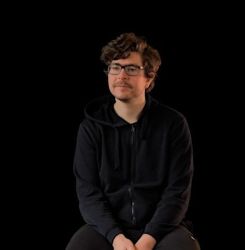 "Interview with Michael Noble" Michael Noble is a professional dancer and performer and has been with Restless Dance Theatre since 2015. Interview Summary Michael Noble is an ex-foster kid turned contemporary dancer at Restless Dance Theatre, who started in arts as an outlet for expression. His dance style has evolved from literal interpretations to more abstract movements, as Restless has supported his growth and mental health needs. Being in a company that accommodates artists with disabilities has led Michael to explore his own neurodivergence, specifically relating to being on the autism spectrum. He believes art, including the political, is less about the message itself and more about being the messenger for another's vision or interpreting and sharing one's own perspectives.
"Interview with Michael Noble" Michael Noble is a professional dancer and performer and has been with Restless Dance Theatre since 2015. Interview Summary Michael Noble is an ex-foster kid turned contemporary dancer at Restless Dance Theatre, who started in arts as an outlet for expression. His dance style has evolved from literal interpretations to more abstract movements, as Restless has supported his growth and mental health needs. Being in a company that accommodates artists with disabilities has led Michael to explore his own neurodivergence, specifically relating to being on the autism spectrum. He believes art, including the political, is less about the message itself and more about being the messenger for another's vision or interpreting and sharing one's own perspectives. -
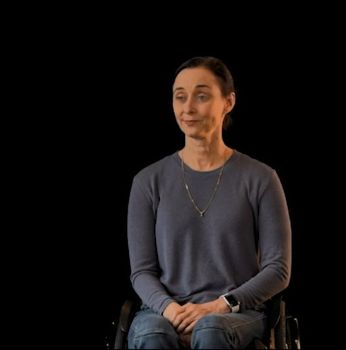 "Interview with Michelle Ryan" Michelle Ryan is the artistic director of Restless Dance Theatre and has extensive experience as a dancer and performer. Interview Summary Michelle Ryan, the artistic director of Restless Dance Theatre, shares her journey from being a successful dancer diagnosed with multiple sclerosis at 30 to becoming an advocate for artists with disabilities. Despite her initial hesitations to perform with her disability, a positive experience dancing with a European company reignited her passion and led her to Restless Dance Theatre, where she aims to change perceptions of who can create art. Michelle emphasizes the importance of providing professional opportunities and proper compensation for disabled artists, challenging the notion that disability work is charity or hobbyist. She advocates for representation that is genuine and not tokenistic, ensuring the inclusion of people with disabilities is meaningful and respectful.
"Interview with Michelle Ryan" Michelle Ryan is the artistic director of Restless Dance Theatre and has extensive experience as a dancer and performer. Interview Summary Michelle Ryan, the artistic director of Restless Dance Theatre, shares her journey from being a successful dancer diagnosed with multiple sclerosis at 30 to becoming an advocate for artists with disabilities. Despite her initial hesitations to perform with her disability, a positive experience dancing with a European company reignited her passion and led her to Restless Dance Theatre, where she aims to change perceptions of who can create art. Michelle emphasizes the importance of providing professional opportunities and proper compensation for disabled artists, challenging the notion that disability work is charity or hobbyist. She advocates for representation that is genuine and not tokenistic, ensuring the inclusion of people with disabilities is meaningful and respectful. -
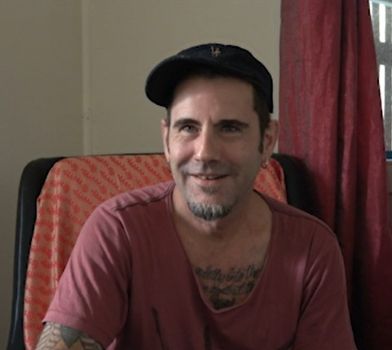 "Interview with Jeremy Hawkes" Jeremy Hawkes is a multidisciplinary artist working in sculpture, drawing, painting and photography as well as being a writer, educator and disability arts leader. Interview Summary Jeremy Hawkes, a visual artist, opened up about his life and identity during his interview. After a debilitating workplace accident, he had to reimagine his sculptural practice due to his acquired disability and ventured into drawing, which helped him cope with multiple operations and diagnoses. Jeremy's art explores themes of identity and the interconnectedness between the macro and the micro, drawing inspiration from neurobiology and medical imagery. Despite his struggles, Jeremy commits to his studio daily, aims for success without fear, and advocates for greater visibility and opportunities for artists with disabilities.
"Interview with Jeremy Hawkes" Jeremy Hawkes is a multidisciplinary artist working in sculpture, drawing, painting and photography as well as being a writer, educator and disability arts leader. Interview Summary Jeremy Hawkes, a visual artist, opened up about his life and identity during his interview. After a debilitating workplace accident, he had to reimagine his sculptural practice due to his acquired disability and ventured into drawing, which helped him cope with multiple operations and diagnoses. Jeremy's art explores themes of identity and the interconnectedness between the macro and the micro, drawing inspiration from neurobiology and medical imagery. Despite his struggles, Jeremy commits to his studio daily, aims for success without fear, and advocates for greater visibility and opportunities for artists with disabilities. -
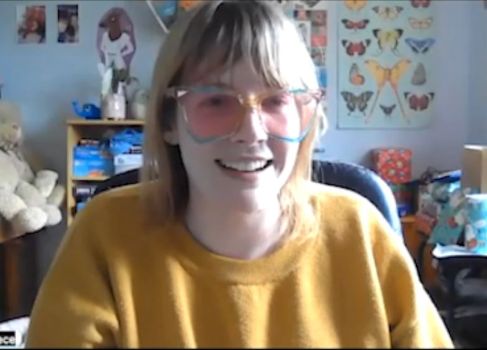 "Interview with Alex Creece" Alex Creece is writer, poet, editor, collage artist, and average kook living on Wadawurrung land. Interview Summary Alex Creece, focused on her experiences and journey as a disabled artist and writer in Australia. Alex discussed the importance of building a community and the challenges of balancing personal identity with maintaining professionalism in art. Alex expressed a desire for increased accessibility and recognition in the industry, highlighting the need for continued support of disabled artists. Throughout the conversation, the complexity of disability arts' visibility, identity politics, and the definition of creative success were explored, with Alex providing insight into her own work as well as broader industry trends and challenges.
"Interview with Alex Creece" Alex Creece is writer, poet, editor, collage artist, and average kook living on Wadawurrung land. Interview Summary Alex Creece, focused on her experiences and journey as a disabled artist and writer in Australia. Alex discussed the importance of building a community and the challenges of balancing personal identity with maintaining professionalism in art. Alex expressed a desire for increased accessibility and recognition in the industry, highlighting the need for continued support of disabled artists. Throughout the conversation, the complexity of disability arts' visibility, identity politics, and the definition of creative success were explored, with Alex providing insight into her own work as well as broader industry trends and challenges. -
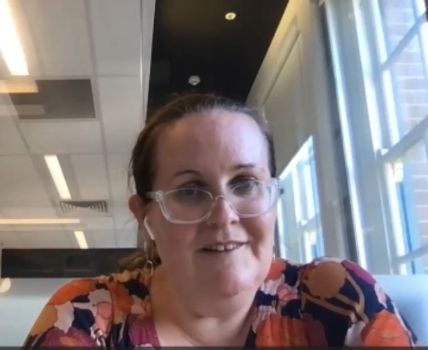 "Interview with Morwenna Collett" Morwenna is a leader, consultant and facilitator in the arts, government, not-for-profit and university sectors and is passionate about helping arts and cultural organisations to include everyone in their work. Interview Summary Morwenna Collett is a consultant in diversity, access and inclusion and during the interview discusses her vast experience in the disability arts sector including time in the Australia Council where she played a key role in creating the first targeted funding program for artists with disabilities. Morwenna notes that while disability arts is gaining some awareness with mainstream audiences, there are still issues regarding how people think about the quality of art created by artists with disabilities. Morwenna highlights the NDIS as a significant milestone for disability arts in Australia, though she believes that there is much more potential for arts organizations to engage with it. Morwenna also emphasizes that the decision for artists to identify with their disability is a personal choice and it is becoming increasingly safe to disclose this identity, demonstrating progress toward inclusion in the arts.
"Interview with Morwenna Collett" Morwenna is a leader, consultant and facilitator in the arts, government, not-for-profit and university sectors and is passionate about helping arts and cultural organisations to include everyone in their work. Interview Summary Morwenna Collett is a consultant in diversity, access and inclusion and during the interview discusses her vast experience in the disability arts sector including time in the Australia Council where she played a key role in creating the first targeted funding program for artists with disabilities. Morwenna notes that while disability arts is gaining some awareness with mainstream audiences, there are still issues regarding how people think about the quality of art created by artists with disabilities. Morwenna highlights the NDIS as a significant milestone for disability arts in Australia, though she believes that there is much more potential for arts organizations to engage with it. Morwenna also emphasizes that the decision for artists to identify with their disability is a personal choice and it is becoming increasingly safe to disclose this identity, demonstrating progress toward inclusion in the arts. -
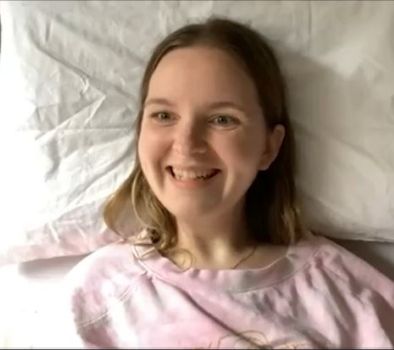 "Interview with Jess Cochran" Jess Cochran (they/them) is an actor, model, writer and disability advocate. Interview Summary: Jess Cochran is a queer, non-binary, neurodivergent, performing artist, advocate, writer, and consumer consultant with a background in both physical and psychosocial disabilities. Their journey into the performing arts began accidentally with a role in the Awards winning Melbourne Fringe Festival production, Qualia, which opened doors to more local and international Awards-winning work in film and stage. Jess identifies proudly with their disabilities and considers their art both a personal expression and a political act aimed at highlighting the issues faced by the disability community. Jess’s work spans across writing, modelling, and various performance arts, and they wish to see an increase of disability arts representation in mainstream media with authentic casting, opportunities and improved accessibility for disabled performers. Jess is also passionate about highlighting intersectionality in disability arts.
"Interview with Jess Cochran" Jess Cochran (they/them) is an actor, model, writer and disability advocate. Interview Summary: Jess Cochran is a queer, non-binary, neurodivergent, performing artist, advocate, writer, and consumer consultant with a background in both physical and psychosocial disabilities. Their journey into the performing arts began accidentally with a role in the Awards winning Melbourne Fringe Festival production, Qualia, which opened doors to more local and international Awards-winning work in film and stage. Jess identifies proudly with their disabilities and considers their art both a personal expression and a political act aimed at highlighting the issues faced by the disability community. Jess’s work spans across writing, modelling, and various performance arts, and they wish to see an increase of disability arts representation in mainstream media with authentic casting, opportunities and improved accessibility for disabled performers. Jess is also passionate about highlighting intersectionality in disability arts. -
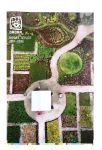 "DADAA Annual Report 2017-2018" DADAA Annual Report 2017-2018 - Chairperson and Executive Director’s Reports, New premises, NDIS, Workshops, Exhibitions, Galleries, Online Gallery, Art Link Programs, Arts Access Australia International Forum, Nexus Arts Grants, Professional Mentorships, Financials
"DADAA Annual Report 2017-2018" DADAA Annual Report 2017-2018 - Chairperson and Executive Director’s Reports, New premises, NDIS, Workshops, Exhibitions, Galleries, Online Gallery, Art Link Programs, Arts Access Australia International Forum, Nexus Arts Grants, Professional Mentorships, Financials -
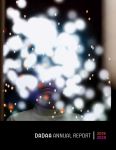 "DADAA Annual Report 2019-2020" DADAA Annual Report 2019-2020 – Chair’s and Executive Director’s Reports, People, Partners, Art Services, New Gallery, Projects including ‘No Fixed Address’, NDIS, Covid19 and digital transitions, Financials
"DADAA Annual Report 2019-2020" DADAA Annual Report 2019-2020 – Chair’s and Executive Director’s Reports, People, Partners, Art Services, New Gallery, Projects including ‘No Fixed Address’, NDIS, Covid19 and digital transitions, Financials -
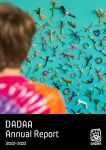 "DADAA Annual Report 2022-2023" DADAA Annual Report 2022-2023 – Chair’s and Executive Director’s Reports, People, Partners, Arts and Client Services, Projects including 4:48 Psychosis, Digital Art for Life, Exhibitions, Financials
"DADAA Annual Report 2022-2023" DADAA Annual Report 2022-2023 – Chair’s and Executive Director’s Reports, People, Partners, Arts and Client Services, Projects including 4:48 Psychosis, Digital Art for Life, Exhibitions, Financials -
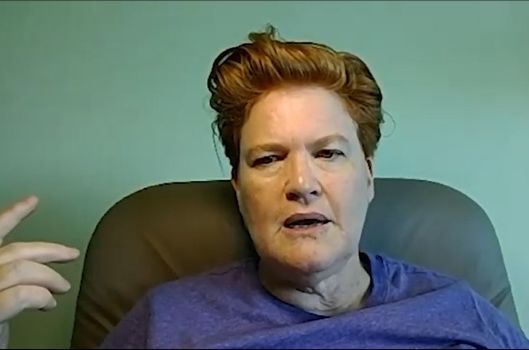 "Interview with Michèle Saint-Yves" Michèle Saint-Yves is a playwright, filmmaker, poet, and director. Interview Summary Michèle Saint-Yves’ background includes a colonial upbringing in Pacific territories, a Scottish boarding school education, and a complex personal journey of confronting her own inherent racism and colonial legacy, particularly through her writing. Her work as an artist with disability is deeply informed by her sense of otherness and focuses on creating inclusive performance-based work that challenges mainstream audiences and systems, aiming for transformative experiences that impact disability justice and community. Michèle actively embraced the social model of disability, which shifted her understanding of herself and her art, and has received recognition for her pioneering work with the prize-winning show "Clock for No Time." However, recognising the social model’s limitations, her current creative endeavours are concerned with 'access intimacy' and evaluating the lasting impact of her performances, in collaboration with other artists and through research grants.
"Interview with Michèle Saint-Yves" Michèle Saint-Yves is a playwright, filmmaker, poet, and director. Interview Summary Michèle Saint-Yves’ background includes a colonial upbringing in Pacific territories, a Scottish boarding school education, and a complex personal journey of confronting her own inherent racism and colonial legacy, particularly through her writing. Her work as an artist with disability is deeply informed by her sense of otherness and focuses on creating inclusive performance-based work that challenges mainstream audiences and systems, aiming for transformative experiences that impact disability justice and community. Michèle actively embraced the social model of disability, which shifted her understanding of herself and her art, and has received recognition for her pioneering work with the prize-winning show "Clock for No Time." However, recognising the social model’s limitations, her current creative endeavours are concerned with 'access intimacy' and evaluating the lasting impact of her performances, in collaboration with other artists and through research grants. -
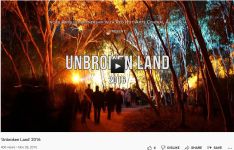 "Incite Arts - Unbroken Land 2016" Incite Arts - Unbroken Land 2016 - reads, in part "The vision for this years’ UNBROKEN LAND was to create art that is about a world we want to live in and not the one that is currently shown us in much of popular culture. So much is overwhelmingly negative and self-perpetuating. We are told we are a divided, racist, intolerant and bigoted society."
"Incite Arts - Unbroken Land 2016" Incite Arts - Unbroken Land 2016 - reads, in part "The vision for this years’ UNBROKEN LAND was to create art that is about a world we want to live in and not the one that is currently shown us in much of popular culture. So much is overwhelmingly negative and self-perpetuating. We are told we are a divided, racist, intolerant and bigoted society." -
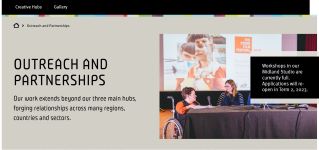 "DADAA Outreach and Partnerships Webpage, captured 2023" DADAA Outreach and Partnerships Webpage, captured 2023 – reads, in part "In addition to its three main hubs, DADAA works with other organisations to take our services and programs to communities, or to develop new services and programs that enhance access to arts and cultural activities for artists and audiences. Arts programs can be customised to respond directly to the needs of your community or clients, to ensure inclusive practice or to bring new audiences to your organisation."
"DADAA Outreach and Partnerships Webpage, captured 2023" DADAA Outreach and Partnerships Webpage, captured 2023 – reads, in part "In addition to its three main hubs, DADAA works with other organisations to take our services and programs to communities, or to develop new services and programs that enhance access to arts and cultural activities for artists and audiences. Arts programs can be customised to respond directly to the needs of your community or clients, to ensure inclusive practice or to bring new audiences to your organisation." -
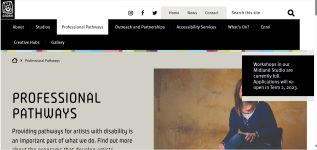 "DADAA Professional Pathways Webpage, captured 2023" DADAA Professional Pathways Webpage, captured 2023 - reads, in part "DADAA supports artists to develop professionally and to realise their dreams however big or small. To support you on your journey as an artist, we offer a range of programs at all levels so that you can progress as an artist as you learn and build your skills."
"DADAA Professional Pathways Webpage, captured 2023" DADAA Professional Pathways Webpage, captured 2023 - reads, in part "DADAA supports artists to develop professionally and to realise their dreams however big or small. To support you on your journey as an artist, we offer a range of programs at all levels so that you can progress as an artist as you learn and build your skills." -
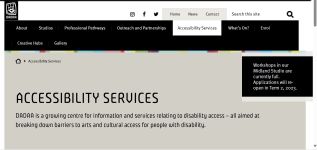 "DADAA Accessibility Services Webpage, captured 2023" DADAA Accessibility Services Webpage, captured 2023 - reads, in part "Working towards larger social and political goals of cultural democracy, DADAA offers services that are designed to facilitate access to arts and cultural activity for artists and audiences with disability."
"DADAA Accessibility Services Webpage, captured 2023" DADAA Accessibility Services Webpage, captured 2023 - reads, in part "Working towards larger social and political goals of cultural democracy, DADAA offers services that are designed to facilitate access to arts and cultural activity for artists and audiences with disability." -
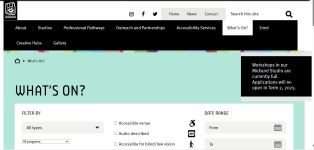 "DADAA What's On Webpage, captured 2023" DADAA What's On Webpage, captured 2023 - includes a search function, with filters for venue accessible, blind/low vision accessible, audio described, and braile events
"DADAA What's On Webpage, captured 2023" DADAA What's On Webpage, captured 2023 - includes a search function, with filters for venue accessible, blind/low vision accessible, audio described, and braile events -
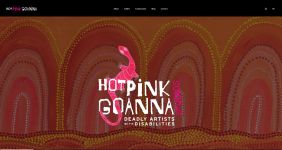 "Hot Pink Goanna Studios - Deadly With Disabilities, Website captured 2024" Hot Pink Goanna Studios: Deadly With Disabilities, website captured 2024 - with About, Gallery, Commisions, and Prints sections - reads, in part "Hot Pink Goanna was developed by Uncle Paul Constable Calcott a proud Wiradjuri man and artist living with a disability on Gubbi Gubbi Country. Hot Pink Goanna showcases the works of Uncle Paul and other First Nations artists living with a disability."
"Hot Pink Goanna Studios - Deadly With Disabilities, Website captured 2024" Hot Pink Goanna Studios: Deadly With Disabilities, website captured 2024 - with About, Gallery, Commisions, and Prints sections - reads, in part "Hot Pink Goanna was developed by Uncle Paul Constable Calcott a proud Wiradjuri man and artist living with a disability on Gubbi Gubbi Country. Hot Pink Goanna showcases the works of Uncle Paul and other First Nations artists living with a disability." -
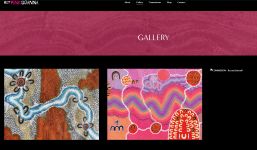 "Hot Pink Goanna Studios - Deadly With Disabilities, Gallery captured 2024" Hot Pink Goanna Studios: Deadly With Disabilities, Gallery captured 2024 - featuring imagews of works by Paul Constable Calcott
"Hot Pink Goanna Studios - Deadly With Disabilities, Gallery captured 2024" Hot Pink Goanna Studios: Deadly With Disabilities, Gallery captured 2024 - featuring imagews of works by Paul Constable Calcott -
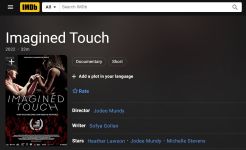 "Jodee Mundy Collaborations - Imagined Touch - IMBD" Reads, in part, "When two Deafblind women asked a theatre director to help them make a show about being deaf and blind, never in their wildest dreams did they imagine it would become an award-winning show."
"Jodee Mundy Collaborations - Imagined Touch - IMBD" Reads, in part, "When two Deafblind women asked a theatre director to help them make a show about being deaf and blind, never in their wildest dreams did they imagine it would become an award-winning show."
